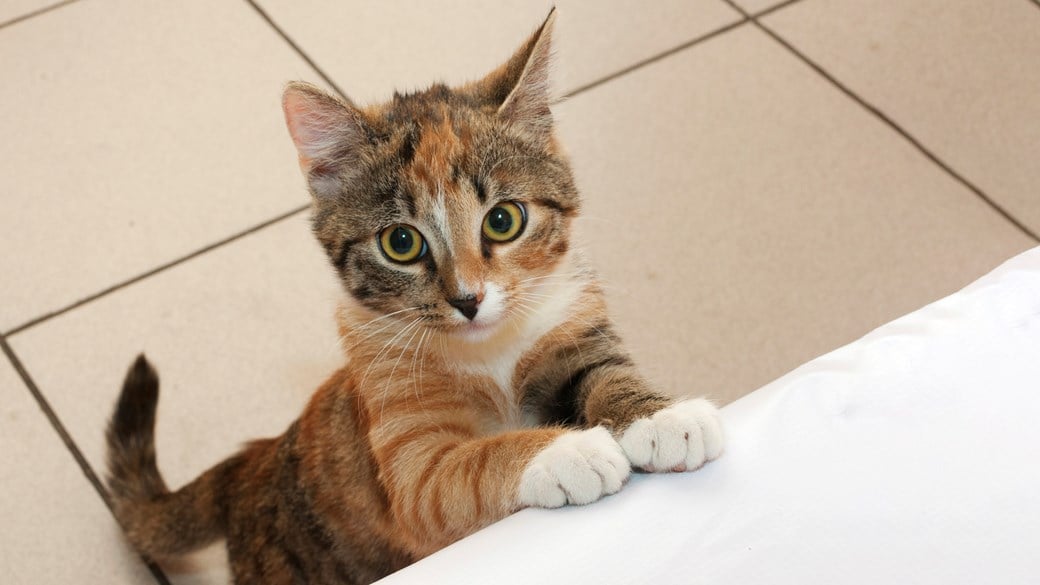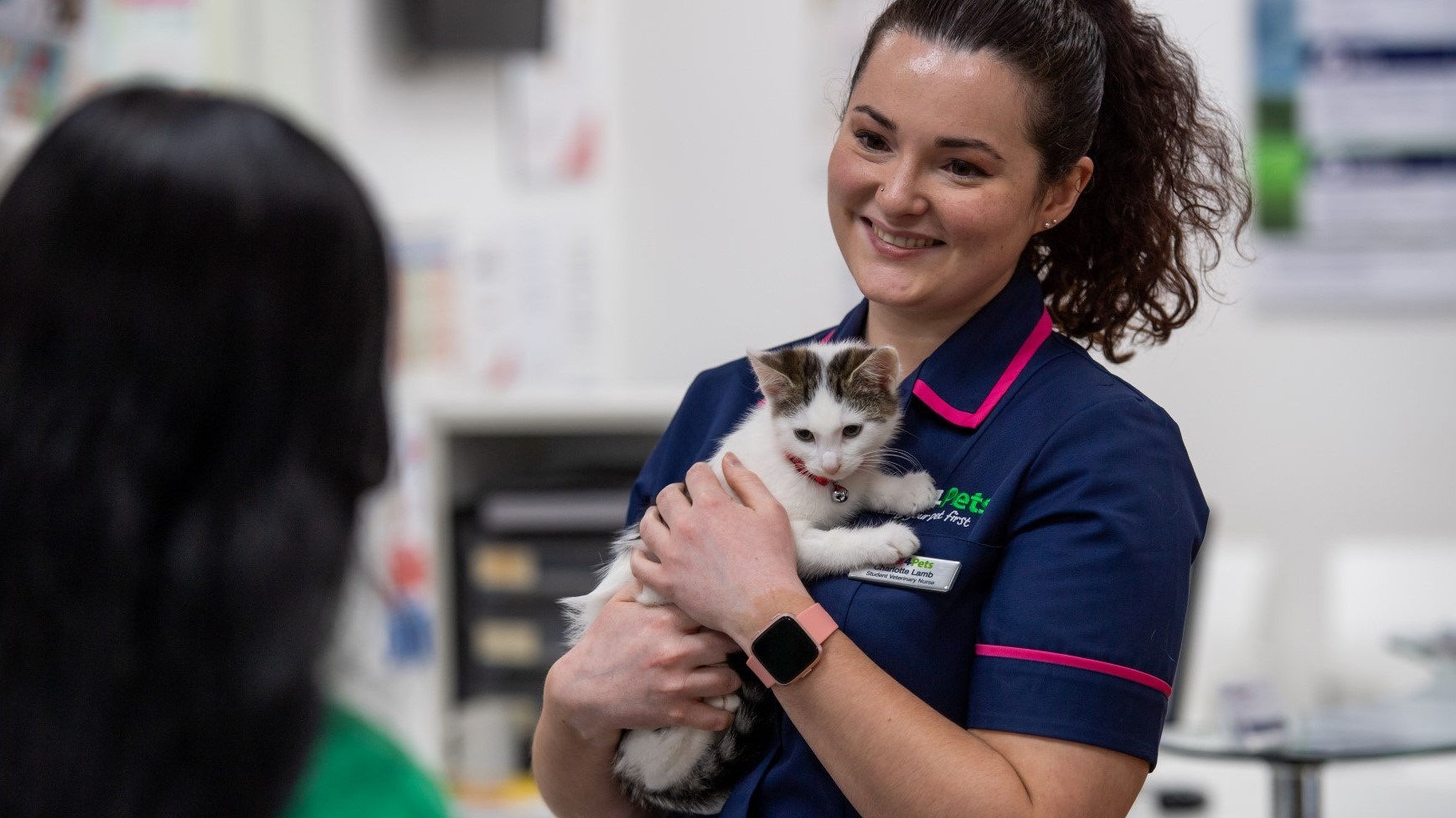
What do you need for a cat?
With so much freedom in our choices, it is important to remember what is important for our cats, and make sure we are keeping them happy and healthy.
Did you know cat litter has only been around since the 1950’s? With the invention of litter trays, smart feeders, microchip cat flaps and cat trees, to name a few, we now have much more freedom in how we choose to set up our cats’ environments.
Read more about outdoor vs indoor housing of cats
Your cat’s brain
When planning your cat’s environment, it is important to consider how your cat thinks. Cats are very territorial; they like to have their own space, and be aware of what is happening around them. They also spend a large part of the day resting.
Did you know cats really love routine? Cats are happiest when they can predict their environment, including where all their resources (food, water, toys, litter tray etc) will be, and knowing when to expect food and company. Just like us, some cats are better and some are poorer at coping with changes in routine or environment. For cats who cope with change very poorly, even a small change can make them ill, or may set off unwanted behaviours such as urine marking in the house.
What do cats need?
Cats should be fed at least twice a day and feeding in a routine is good for your cat. Think carefully about placement of your cat’s food bowl – cats like to be able to see their surroundings when they eat, and having their food bowl in a corner can be stressful if they cannot stand behind the food and look out. Cats also feel vulnerable when they are eating, so place the food bowl somewhere quiet. Food and water bowls should be kept separately, as this is preferable for cats.
Your choice of what to feed has a huge impact on your cat’s long term health and wellbeing – for more information on what to feed your cat, take a look at our guide to feeding your cat.
Your cat should always have access to fresh, clean water. Cats are not very good at drinking enough – mice contain lots of water, and a fully natural diet would mean very little extra drinking is required. For cats on a dry diet rather than this natural prey it is important that they drink enough. Drinking can be encouraged by:
- Using drinking fountains
- Using glass or ceramic bowls
- Keeping water dishes shallow and well-filled
- Having plenty of places available to drink from.
Again, in multi-cat households, having plenty of places to access water will reduce inter-cat tension.
For cats with access to the outdoors this may seem simple, but in multi-cat houses with tension one cat may ‘hold’ the territory that contains the cat flap, making exiting the house a very stressful action for any other cats.
For indoors cats, litter trays must be kept clean – cats are very fastidious, and may refuse to use a litter tray a second time once it has already been used. In multi-cat households it is recommended to always have one more litter tray than the number of cats (e.g. for two cats, have three litter trays).
The substrate you choose for your litter is important for your cat – they will like to use what they are used to. If you do want to change your litter box substrate, do this slowly and monitor your cat’s response.
Especially in households with children, having a safe space to escape to if it all gets too much is important for cats. This is an area where they know they will not be disturbed, and the whole family should know not to interact with your cat if they are there.
Ideally cats like to rest high up so they can view their surroundings – cat trees, radiator beds, secure cat shelves and deep windowsills are all examples of places that might be ideal for a cat to rest while still surveying their territory.
Keeping claws sharp, stretching muscles and marking their territory are all benefits of cats scratching. Giving them somewhere to do this will help them demonstrate their natural behaviour, as well as helping save your furniture!
You will find scratching posts get more use when they are near exit and entranceways, rather than tucked away, as cats like to use vertical scratching to mark territory.
In the majority of cases, access to the outdoors is a bonus for cats and goes a long way towards helping them express their natural behaviours. If you can safely let your cat outside, providing regular access is a great way to give them exercise, a wider territory and freedom.
If you do let your cat have access outside, consider getting a cat flap which only lets your cat enter. These can work through magnet collars, although this type will let in all cats with a matching magnet, or through reading microchips which will only let in your own cat or cats. This prevents entry into the home by other local cats, which can be very stressful for your cat.
Toys are a great way to stimulate your cat, and are especially important for indoor cats who are not getting the mental stimulation of being outside. They are a great way to engage with your cat, keep them active and have safe play.
String based toys are fine so long as they are supervised, but cats should not be left alone with string – if swallowed it can cause very nasty blockages that can require lengthy surgery and may kill.
Cats are often seen as being very independent, but their need for interaction should not be overlooked. Make sure to spend quality time with all the cats in your household if you have multiple, as pushier cats can easily commandeer all the petting time!
Health Plans to keep your cat healthy
At Vets4Pets we offer a range of Health Plans that make essential routine treatments more affordable. You'll save money on things like annual vaccinations, flea and worm treatment and routine health check-ups.

Cat Advice
Read more of our expert cat advice to keep your cat happy and healthy.
